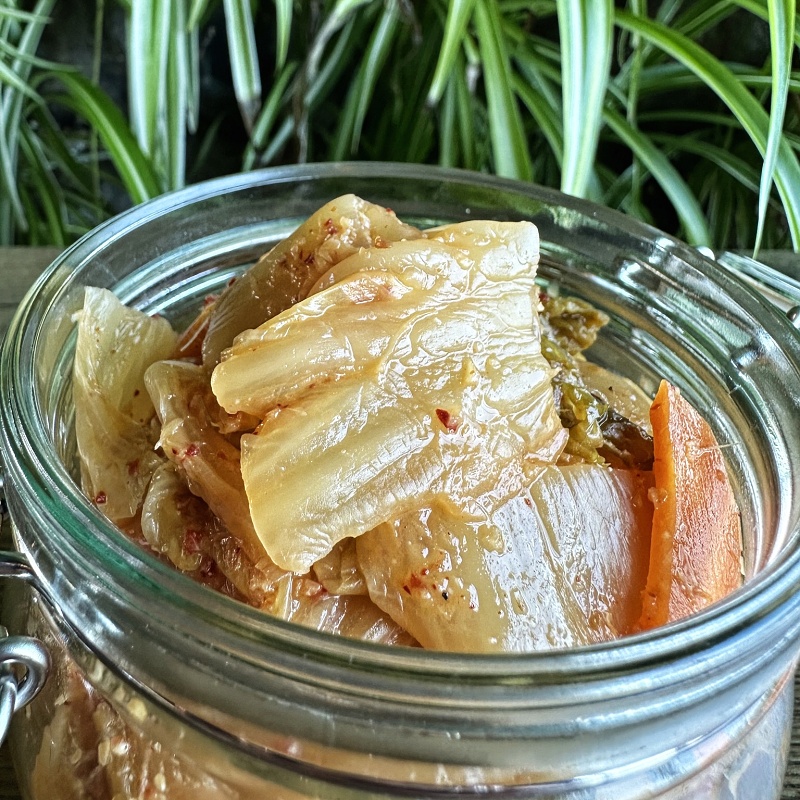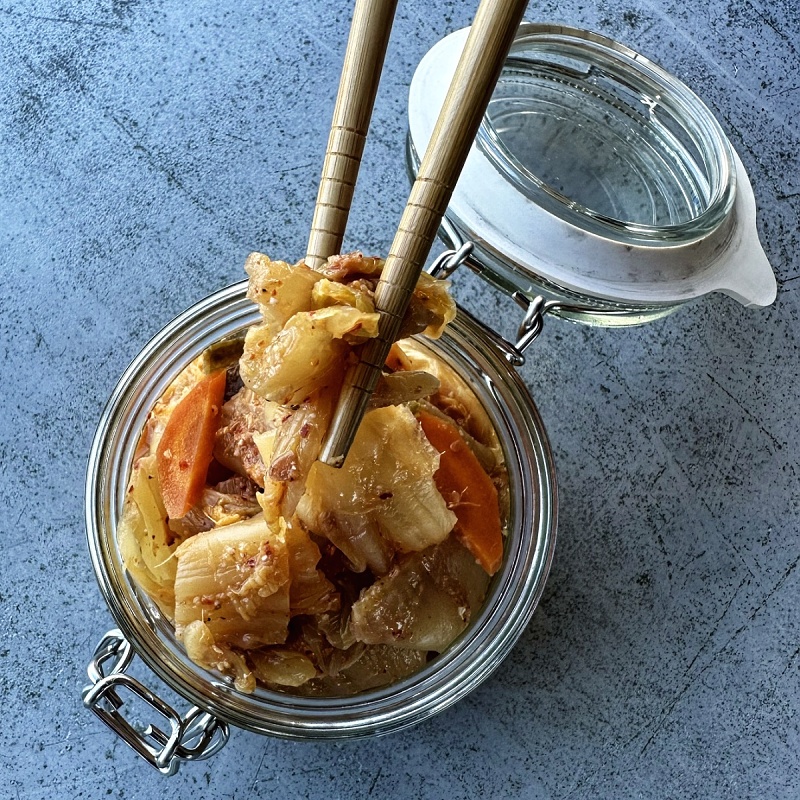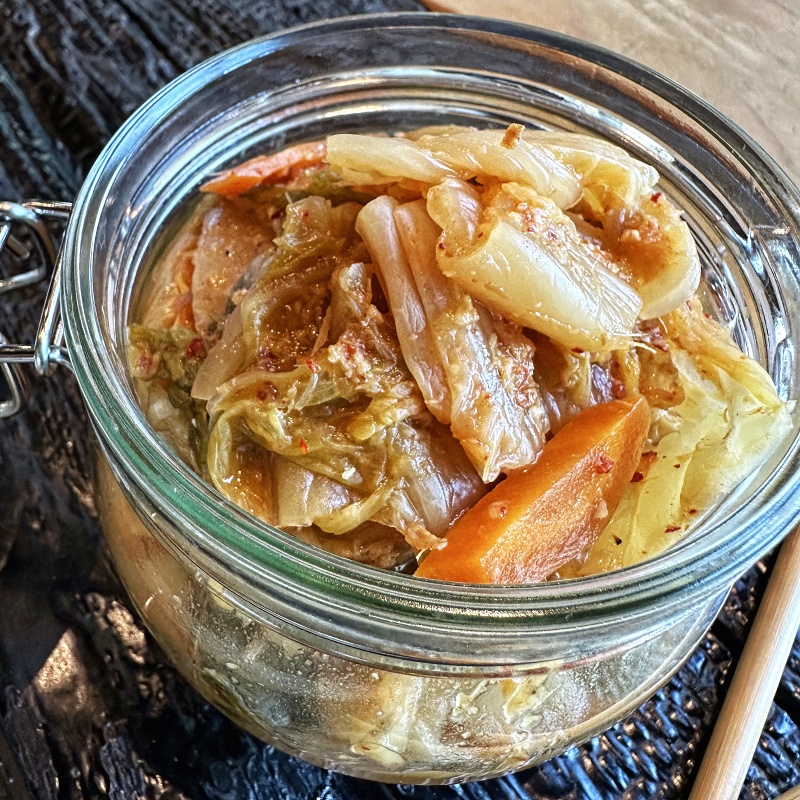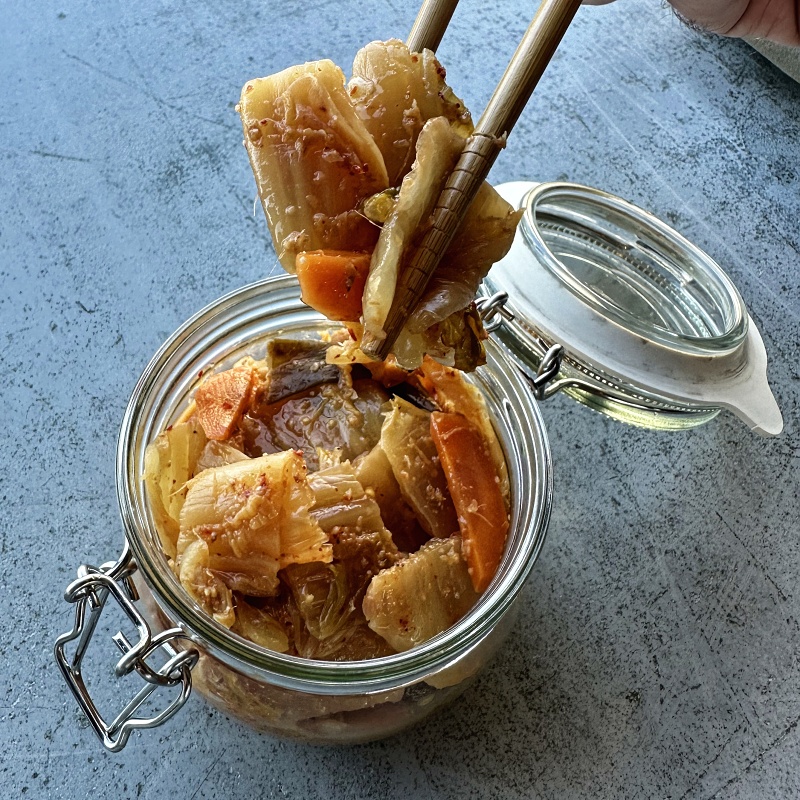Kimchi by Daniela Bystrická
There are countless ways to ferment kimchi, but this one comes from Daniela Bystrická. We are happy to share her favorite and well-tested recipe, which you can, of course, adjust to your own taste.
Kimchi Paste
Ingredients for approx. 3 kg of Napa cabbage:
- Garlic – 40 g
- Ginger – 100 g
- Fish sauce – 230 g
- Rice vinegar – 80 g
- Garlic vinegar – 10 g
- Shrimp paste – 40 g
- Gochugaru – 20 g
- Buckwheat tamari – 170 g
- Anchovies – 30 g
- Shiokoji – 100 g
- Water – 300 ml
- Sticky rice flour – 30 g
Method:
- Add all ingredients gradually, tasting as you go and adjusting to your preference—spiciness, acidity, garlic intensity, etc.
- Mix rice flour with a little cold water to make a slurry, then add the remaining water and bring to a boil while stirring.
- The resulting paste will be thick and translucent; allow it to cool.
- Meanwhile, peel garlic and ginger and blend with liquids, anchovies, and shrimp paste until smooth.
- Add the cooled rice paste, shiokoji, and gochugaru, and briefly blend again.
Kimchi Salad
Ingredients:
- Napa cabbage (gross weight) – 3 kg
- Carrot – 150 g
- Spring onions – 200 g
- Daikon – 250 g
- Kimchi paste – 1 kg
- Water (for cabbage brine) – 6 l
- Non-iodized salt – 300 g
Non-iodized salt is used because iodine can negatively affect the fermentation process and also changes the flavor, which traditional Korean recipes avoid.
Method:
- Remove outer leaves of the cabbage, wash, and cut into preferred sizes.
- Sprinkle with salt, rub it into the cabbage, and pour in water.
- Let the salted cabbage soak in the brine (use a weight to keep submerged) for 12–24 hours.
- Check readiness by the cabbage’s texture: it should be flexible but not brittle or breaking.
- Remove cabbage from brine and squeeze out excess water.
- Prepare the remaining vegetables, slicing into thin strips or preferred shapes.
- Mix cabbage, vegetables, and kimchi paste in a large bowl (gloves recommended—kimchi paste can be harsh on skin).
- Transfer kimchi to a fermentation container, press to remove excess air, and weigh down. Alternatively, use a vacuum sealer to portion into bags (fill only halfway as kimchi expands during fermentation).
- Ferment at room temperature away from direct sunlight, or in the refrigerator.
- Refrigeration slows fermentation, taking 3 weeks to a month; at room temperature, 7–14 days.
- Store finished kimchi in a cool place (refrigerator).
Autumn is a perfect time to start homemade ferments, such as kimchi! Dive in and enjoy the process.




